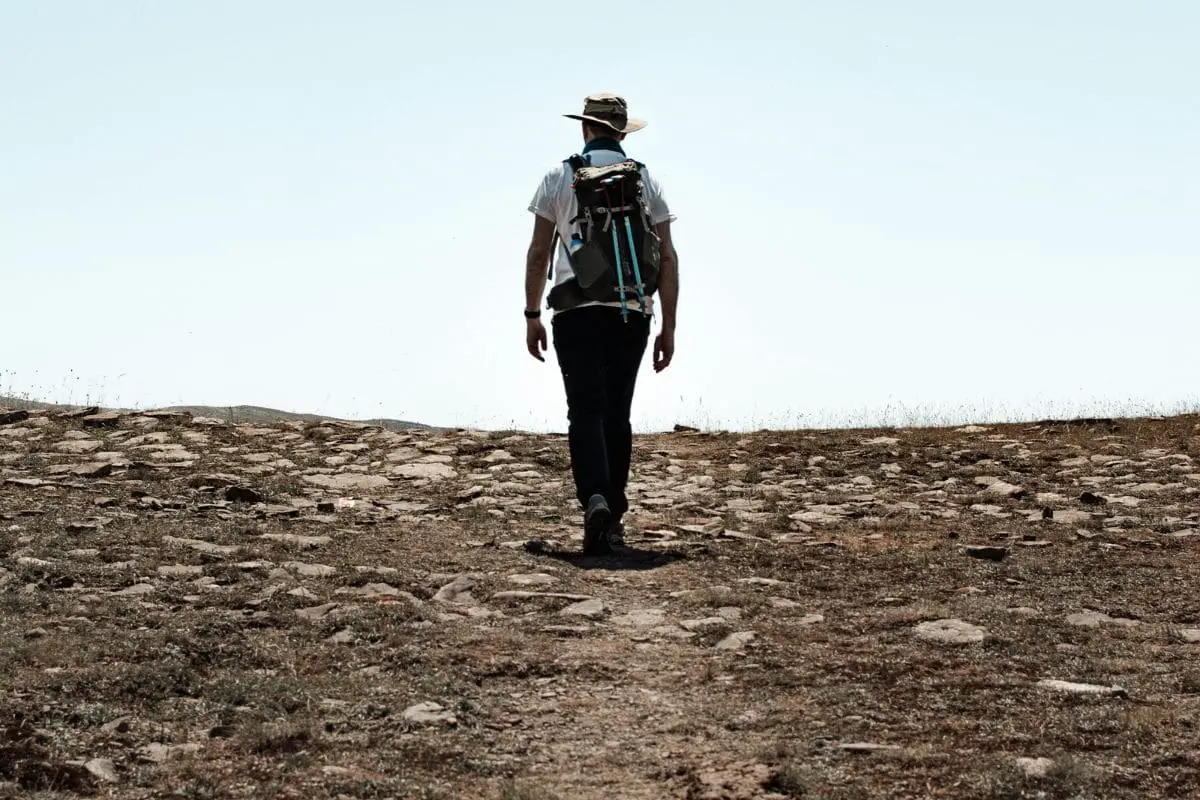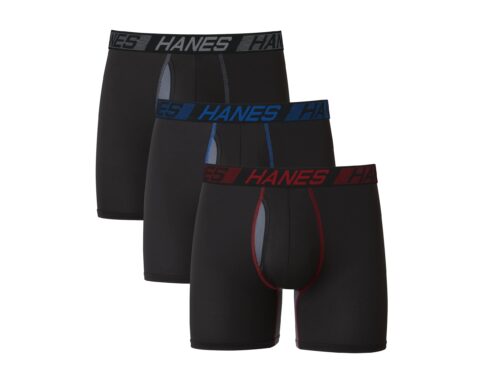Mastering the art of uphill hiking can transform your outdoor experiences, offering not only breathtaking views from the summit but also significant personal satisfaction and physical benefits.
Improving your uphill hiking technique is a multifaceted process that involves physical conditioning, mastering specific techniques, and understanding the right gear to use.
By focusing on these areas, you can increase your speed and efficiency when tackling challenging inclines, making your hikes more enjoyable and less exhausting.
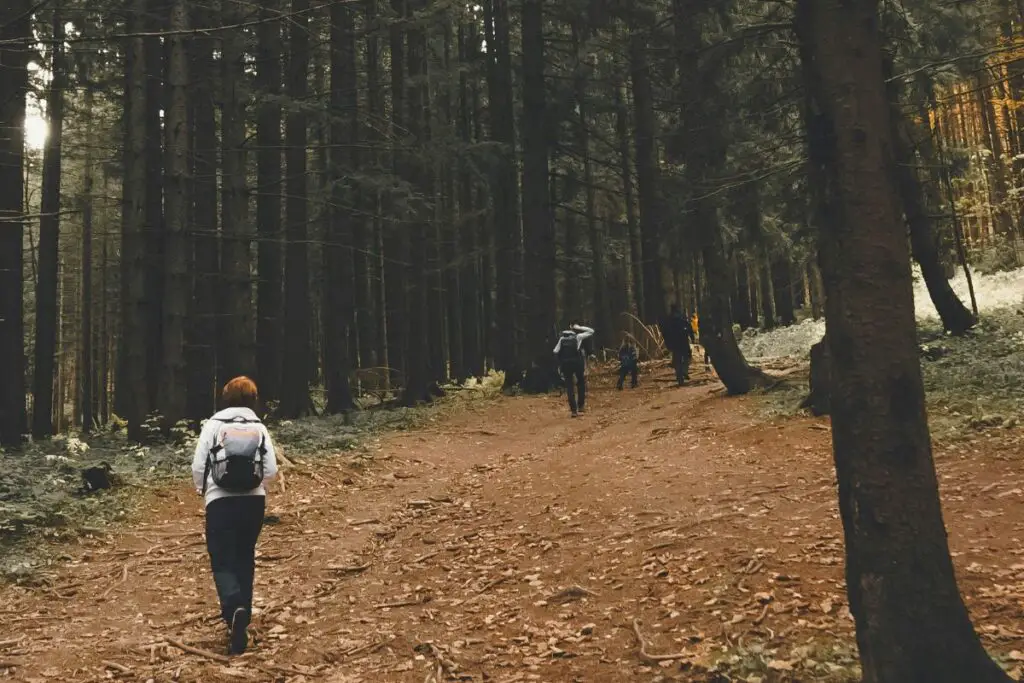
Physical preparation is crucial, and integrating targeted exercises such as lunges, squats, and calf raises into your routine can enhance your leg strength and endurance – two key components for uphill hiking.
Cardiovascular fitness also plays a significant role; gradually increasing the intensity of your hikes can build stamina over time. It’s essential to strike a balance between pushing your limits and allowing your body to adapt to the rigors of ascending trails.
Refined hiking techniques can also reduce exertion and prevent injuries.
- Using trekking poles can aid with balance and take some strain off your legs.
- Additionally, adjusting your stride to take shorter, more controlled steps can help maintain your balance and distribute workload evenly across your muscles.
- Keeping a good posture not only helps with breathing but also aids in maintaining your energy levels throughout the hike.
With practice and mindful application of these principles, you’ll notice a significant improvement in your uphill hiking capabilities.
Essential Gear for Uphill Hiking
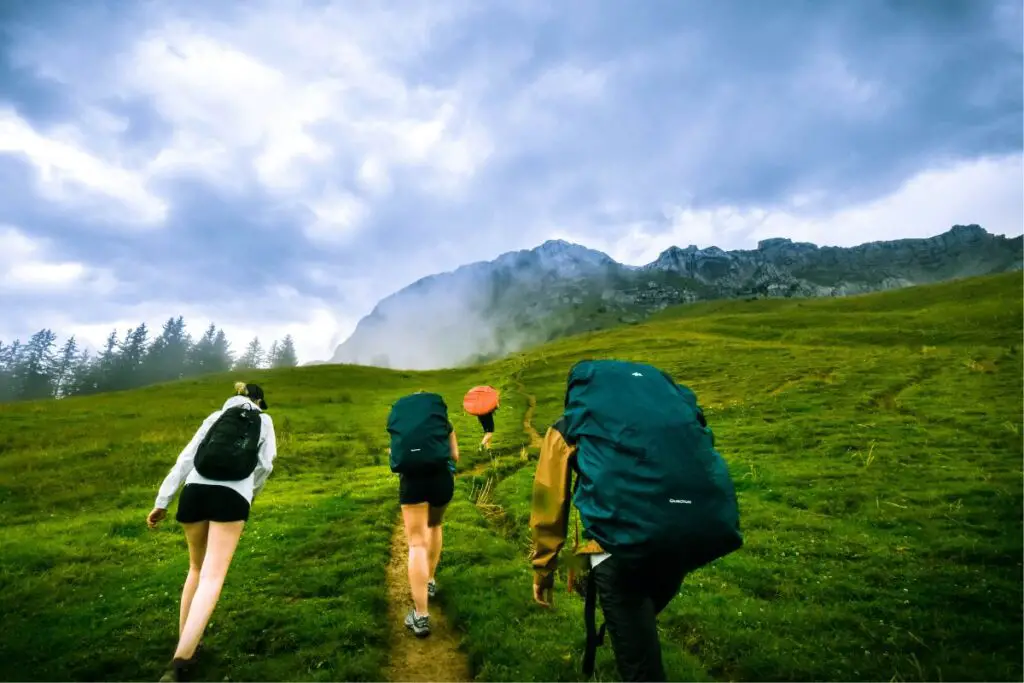
Selecting the right gear is pivotal for your comfort and performance when hiking uphill.
Choose footwear that provides support and traction, and consider trekking poles for additional balance and power.
Choosing the Right Footwear
Your choice of footwear can make a significant difference in uphill hiking.
Adequate traction is essential to maintain stability on steep slopes. Look for hiking boots with deep lug patterns, a feature that enhances grip on uneven terrains.
Hiking shoes are an alternative for lighter trips where agility is valued over ankle support.
In contrast, trail running shoes may be suitable for fast-paced uphill hikes due to their lightweight design and flexible construction. Below is a checklist to help you pick the appropriate footwear for uphill hikes:
- Hiking Boots: Best for rugged, steep terrain.
- Deep lug soles for superior grip
- Ankle support to avoid sprains
- Waterproof materials for wet conditions
- Hiking Shoes: Ideal for moderate terrain.
- Flexibility for a range of movements
- Breathable materials to keep feet dry
- Ample cushioning for comfort
- Trail Running Shoes: Good for well-maintained trails and quick ascents.
- Lightweight construction
- Flexible soles for speed
- Adequate traction for safety
Harnessing the Power of Trekking Poles

Trekking poles act as an extension of your limbs, giving you two extra points of contact with the ground for improved balance.
They distribute the workload away from your legs and aid in propulsion on upward slopes.
Here’s what to look for:
- Adjustable length poles to match your height and the slope’s gradient
- Ergonomic grip to prevent hand fatigue and ensure control
- Durable materials like aluminum or carbon fiber for long-term use
- MADE TO LAST: Whether you're hiking on rugged terrain or snowshoeing on fresh powder, you need hiking gear that can keep up! TrailBuddy trekking poles are built tough enough for the long haul.
- PREMIUM QUALITY: Crafted from elite aircraft-grade 7075 aluminum, each 9.7 ounce trekking pole is designed to be lighter, stronger, and more durable than other aluminum trekking poles for hiking.
- ADJUSTABLE: Set to your desired height in seconds, from just 24.5" when fully collapsed up to their 54" max height. They even double as hiking poles for kids!
- EASY TO USE: Our lever locks can be easily operated with just one hand, which is much easier than the 2-handed twist locks on other walking sticks for hiking.
- SECURE HOLD: The padded straps and moisture-wicking cork handles will mold to the shape of your hand for a comfortable grip on each walking stick. Our threaded pole tips keep the included accessories attached, even in snow or mud.
When ascending, adjust the poles to a shorter length to allow for better leverage and more effective power transmission. Your backpack should also be compatible with pole attachments for convenience when not in use.
Physical Preparation

To excel at uphill hiking, prioritizing your physical conditioning is essential.
By focusing on leg strength and endurance, core stability, and flexibility, you’ll be better equipped for challenging inclines.
Building Leg Strength and Endurance
Strong legs are fundamental for uphill hiking. Your quads, hamstrings, calves, and glutes are all engaged when climbing.
To build strength and stamina:
- Squats: Essential for developing thigh and glute strength.
- Stand with feet shoulder-width apart
- Perform 10-20 reps, add weight to increase difficulty
- Lunges: Improve balance and strength in your legs and hips.
- Step forward with one leg, bend both knees at 90 degrees
- Alternate legs, aim for 10-15 reps per leg
- Step-Ups: Enhance leg power, beneficial for mimicking the uphill step.
- Find a bench or platform
- Step up and down, 10-15 reps per leg
- Calf Raises: Strengthen your calves for uphill climbs.
- Rise onto the balls of your feet
- Slowly lower back down, aim for 15-20 reps
Incorporate cardio training, like cycling, to improve cardiovascular health and leg endurance. Aim to follow a rhythm that aligns with your fitness level, gradually increasing intensity.
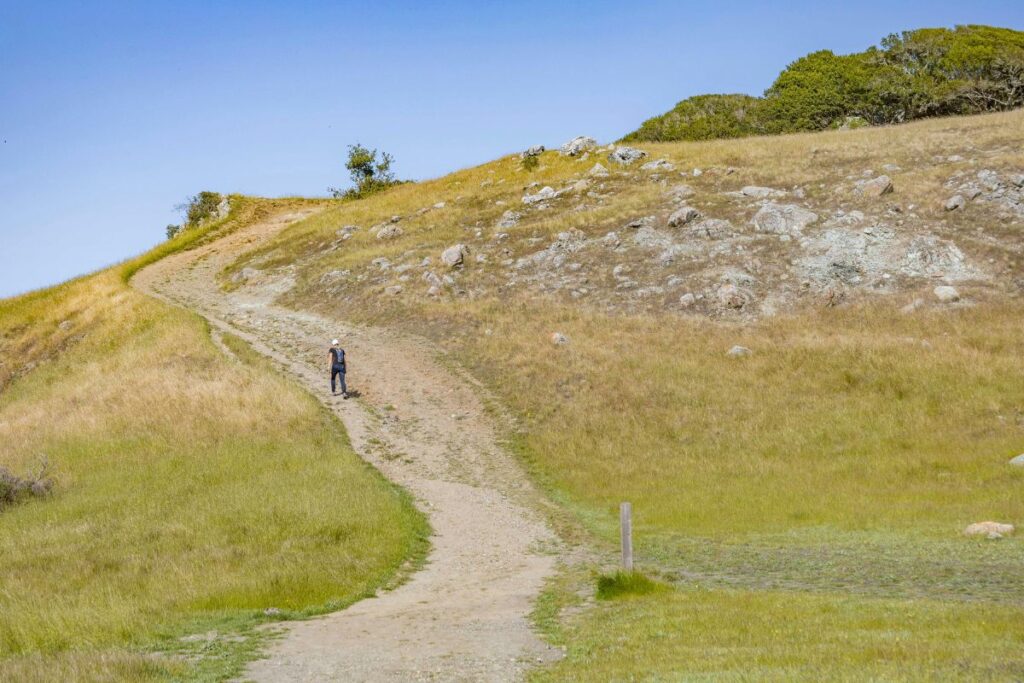
Core Training and Balance
A strong core stabilizes your whole body, supporting good posture and balance throughout the hike.
- Plank: Target your entire core, focusing on the abdominal muscles.
- Hold the position for 30 seconds to one minute
- Side Planks: Strengthen the oblique muscles and improve lateral stability.
- Hold each side for 30 seconds
These exercises also support your back, hip, and knee joints, preparing them for the continuous strain of uphill hiking.
Find out 🚶 How to Strengthen Knees for Hiking?
Flexibility and Warm-up Routines
Proper stretching and warm-up routines will improve your flexibility, reduce the risk of injury, and prepare your muscles for the hike.
- Dynamic Stretching: Prior to hiking, perform movements that mimic your hiking activity.
- Leg swings, arm circles, and lunges
- Static Stretching: Post-hike, focus on lengthening and relaxing your muscles.
- Stretch your hamstrings, quads, and calf muscles
- Hold each stretch for 30 seconds
Beginning your hike with short steps can also serve as an active warm-up, helping you to establish a steady pace and reduce early fatigue.
Remember, consistency in these exercises will lead to improved leg strength, core stability, and flexibility, all of which are crucial for mastering the uphill climb.
Techniques for Efficient Uphill Hiking
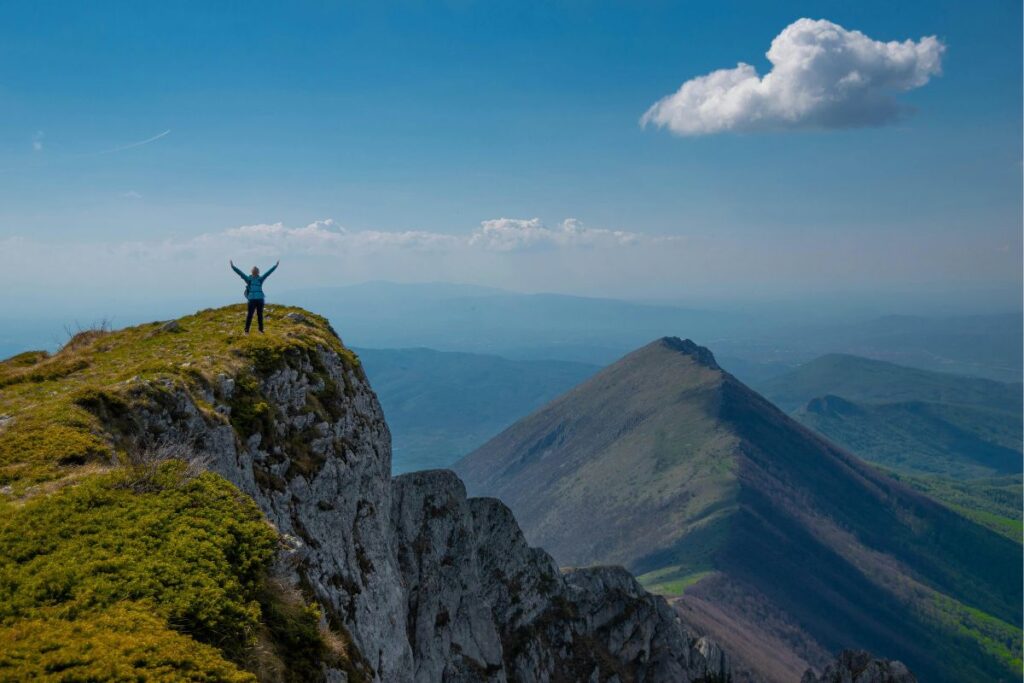
To excel at uphill hiking, focus on refining your step technique, controlling your breathing, and leveraging the terrain. Each component plays a significant role in improving your hike’s efficiency and endurance.
Mastering Short Steps and Rhythm
Taking shorter steps while climbing uphill is central to maintaining your balance and conserving energy. Short steps allow for a more manageable center of gravity and minimize the risk of a misplaced foot.
- Rhythm: Establish a consistent cadence to build momentum, which helps in tackling steeper inclines.
- Benefits: Improved stability and the ability to sustain a steady pace over various segments of the hike.
Optimizing Breathing and Pacing
Efficient breathing is directly tied to performance, especially at higher altitudes where the air is thinner.
- Breath Control: Inhale deeply through your nose and exhale through your mouth, matching your breathing with your stride.
- Pace Yourself: It’s essential to recognize when to push and when to pace yourself, taking short breaks as needed to recover and hydrate.

Using Terrain to Your Advantage
Understanding the lay of the land can greatly benefit your ascent.
- Proper Technique: Use natural features like rocks or compacted soil for better footing, and engage in exercises like squats and calf raises to prepare your legs.
- Zig-Zagging: When faced with a steep slope, using a zig-zag pattern can make the ascent less challenging by reducing the gradient you face.
Remember to choose quality footwear that provides support and grip, and always warm up before beginning your hike to prime your muscles for the journey ahead.
A positive mindset can also contribute significantly to your uphill hiking performance, so keep your goals in sight and your spirits high.
